Dozens of dams can fail or be in danger of failing during a single event (i.e. swarming failures). Dam owners and regulators need to prepare for these types of events.
Events like hurricanes and tropical storms, regional floods, rapid snowmelt or rain-on-snow events, and earthquakes can damage or cause failure of multiple dams. For example, in 1994, Tropical Storm Alberto devastated the state of Georgia and made access to dams quite difficult. Approximately 1,300 dams were inspected by air or ground, and the storm resulted in 230 failures. In 2011, the Northeastern United States were ravaged by back-to-back storms in Hurricane Irene and Tropical Storm Lee. New Jersey alone performed 267 dam inspections during this event and had 6 dam failures and 51 dams damaged. During the record 2013 Colorado Front Range Flood Event, over 207 dams were inspected, 9 non-jurisdictional dams failed, and 15 dams experienced “safety issues”. Based on review of available literature, at least 412 dams within the United States have failed in dam failure swarms since 1986.
As evidenced by these events, owners of large inventories of dams and dam safety regulators not only need an Incident and Emergency Action Plan for individual dams, they need to plan for how they will prepare for and effectively respond to a “swarm” of dam incidents and failures. Responding to multiple dams in distress can be overwhelming and tax resources. Dam safety programs need to be prepared for the high level of response needed for large disasters that can threaten many dams at once. Experience has shown that failure to plan ahead and prepare for swarm events can result in:
- Dams going uninspected during an emergency;
- Missed opportunities to keep slowly developing incidents from being dealt with while time is available to mitigate developing incidents or intervene for dams whose failure is deemed imminent;
- Misunderstandings in communications with dam owners and their private engineers;
- Untrue or negative reports in the media and on social media;
- Stressed out and exhausted staff;
- Inability to take remedial emergency actions at damaged dams (interim risk reduction measures); and
- Inability to leverage other valuable resources such as the skills of private engineers and consultants.
Most of the swarm dam failure events of the past have been at dams on different drainage basins or over relatively large areas. However, it is also possible for multiple dam failures to occur on a single watercourse (dams in series). The flood resulting from failure of the upstream dam causes failure of the downstream dam. These are also called “Domino Dam failures.” For example, in 1982 Lawn Lake Dam failed and the resultant flood subsequently failed Cascade Dam. In 1983, the Bureau of Reclamation had its hands full with high spillway flows at multiple large dams on the Upper Colorado River. The flows from the upstream dams later caused major damage to the Glen Canyon Dam spillway. More recently, the failure of Edenville Dam contributed to overtopping and failure of the downstream Sanford Dam during a large flood event in Michigan in May 2020.
This lesson learned is based on research of dam failure swarms from several recent ASDSO technical papers (see references below). It is important that additional research and training be conducted on this topic so that all dam safety programs with multiple dams (both owners or regulators), public safety agencies, and private engineering firms are ready for such events.
Below are some key points from the technical paper research and the author’s knowledge about dam safety programs to aid in positioning the program in advance of a crisis. These points are essential for proper performance and effective response of a dam safety program during an event that threatens multiple dams. Many of the technical papers have been authored by state dam safety programs documenting hurricane and tropical storm events. The below points are oriented toward state dam safety programs and large flood events, but they can also be applied to dam owners or other types of natural disasters.
Before the Event
- Establish productive, positive, and professional relationships with state and county emergency operations people, state media staff, federal organizations, departments of transportation, the State National Guard, National Weather Service, private engineering firms, etc. Teach them about dams, dam failures and incident response. More than any other item on this list, relationships with these agencies will be invaluable during any dam incident regardless of size or complexity.
- Perform a multiple dam incident/failure event exercise.
- Get government cell priority service to maintain cell service during an event.
- Read about and learn from past multiple dam failure incidents and events (see references).
- Have staff take National Incident Management System (NIMS) training on the Incident Command System (ICS) through FEMA.
- Locate and equip a conference room to be your own Dam Safety Emergency Operations center.
- Identify who can perform dam emergency actions at dams (breaches, sandbagging, supplies, materials, heavy equipment, etc.) and address legal (liability and access issues), procurement, and funding. If problems emerge at a smaller dam, the reservoir may need to be lowered via the outlet works, siphoning or pumping.
- Determine the logistics of inspecting dozens or hundreds of dams in a timely manner after an event.
- Work with the National Weather Service and others to track rainfall and location. Get storm total precipitation products.
- Have GIS coordinates and access maps for all dams.
- Develop a strategy to direct limited resources in the most effective way to address the most pressing needs and minimize false alarms.
- Develop positive relationships with several influential people in the local and regional media and educate them on dam safety.
- Plan for how data will be tracked and shared during the event (e.g. Google drive).
- Develop a media kit to explain to reporters about dams and spillways and failures, attend media training.
- Confirm existence of or establish Emergency Management Assistance Compacts (mutual assistance agreements) with other nearby states.
- Ensure heavy equipment is accessible to all parts of a dam in an emergency (crest and toe of the dam).
- Have inspection reports with maps including both normal (and secondary if necessary) access routes to dams.

Leading up to an Event
(Note that some events like hurricanes have several days of warning, other events like earthquakes and regional storms have only minutes or no warning)
- Implement the dam safety Emergency Operation Center (EOC), begin daily conference calls with staff.
- Contact the state EOC, plan for having your dam safety staff at the EOC during the event.
- Monitor the weather, determine which dams will likely be affected.
- If dams have flood storage capacity or operable gates, plan for operations to manage flood waters considering whether downstream areas could already be flooded.
- Contact the dam owners or their private inspection engineer, recommend they prepare including clearing spillways of debris, removing floatable objects, notifying staff, and reviewing their EAP.
- Be prepared for the question “Should we lower the reservoir in advance of the storm?”
- Contact your media organization and your press network, transmit media kit and remind them of key points.
- Keep your management informed of preparedness efforts.
- Remind staff, dam owners and press that tropical storms can have just as large an impact on dams as hurricanes.
- Put your procurement staff on notice and get contact information for after hours.
- Contact other state departments that own dams in the area.
- Identify dams that are particularly vulnerable (in poor condition, poor or undersized spillways, or under construction).
- Identify dams with high populations at risk.
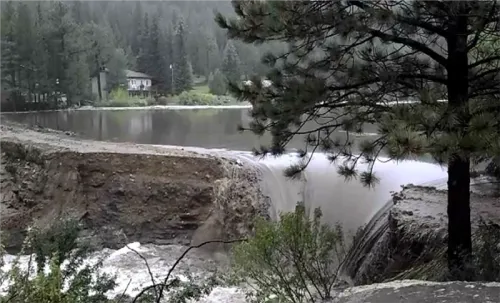
During the Event
- Have staff at the State EOC and feed them information.
- Develop procedure for allocating limited resources to dams with greatest need.
- Get storm total precipitation products and compare with dam locations.
- For dams with controllable spillways, be aware of how large releases begin or if they will impact areas downstream that are already flooding.
- Ensure counties with high rainfall and counties that have High hazard dams are aware of dams and of populations at risk below dams.
- Push information out to the media. It is your chance to tell the correct story.
- Develop a consistent message and talking points for the media. Implore the media to get the message out to the public. Ensure everyone on your staff understands the need for a consistent message.
- Develop plans, procedures, and protocols for alternative methods to quickly and accurately assess dams of concern when roadways are inaccessible.
- Work with the State EOC to get aerial reconnaissance. Note that helicopter reconnaissance is generally better than airplane reconnaissance because the helicopter moves slower/lower and can in some cases land at a dam. However, helicopter costs can be as much as ten times the cost of an airplane. Unmanned Aerial Vehicles (UAVs) might also be able to do reconnaissance.
- Be prepared for reports of dam safety incidents and failures that need to be quickly verified. Spillways that have never flowed in the past may flow and cause incorrect reports that the dam is overtopping or failing.
- Monitor and interact with social media such as Twitter, Instagram and YouTube.
- The event may be over in a couple of days. But the impacts to the dams can last much longer. Fatigue sets in. Plan to relieve exhausted dam safety staff. Emphasize the need for shift changes and safety.
- Consider relocating staff from other parts of the state to the affected area.
- Be on the lookout for additional storms/hurricanes or aftershocks (earthquake) to occur.
- Through the state EOC, see what assistance is available from FEMA, USACE, National Guard, DOT or others to help address problems at dams. FEMA may be able to deploy an incident Mitigation Assessment Team.
- Once it is safe to do so, arrange for inspecting all dams in the affected area. This may be through a contract, volunteers, the USACE or others.
- Issue letters to dam owners about the inspection or assessment findings.
- Have daily conference calls with all staff at the same time to gather intelligence, provide information to staff, and prioritize resources.
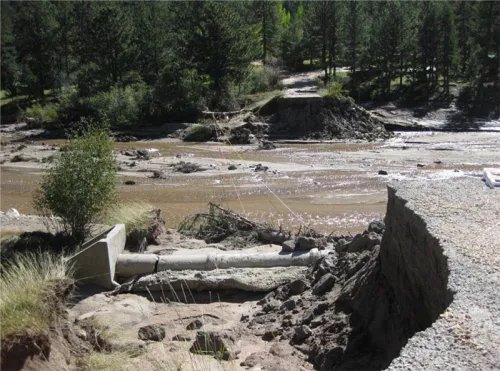
Following the Event
- As soon as practicable after the event, conduct a lessons learned meeting with all involved.
- Document damage and incidents in dam files for future dam repairs/dam safety assessments.
- Make improvements to the program’s policies and procedures.
- Develop a technical paper about the event and the program’s response.
- For major dam failures, work with owners to conduct an independent dam failure investigation.
- Consider educational opportunities and memorials for significant events.
References:
This lesson learned was peer-reviewed by Mike Hand, P.E., WYOH2OPE; Ken Smith, P.E., Indiana DNR; John Moyle, P.E., New Jersey DEP; Greg Richards, P.E., CFM, Gannett Fleming; and Lee Mauney, P.E., CFM, DamCrest Consulting.


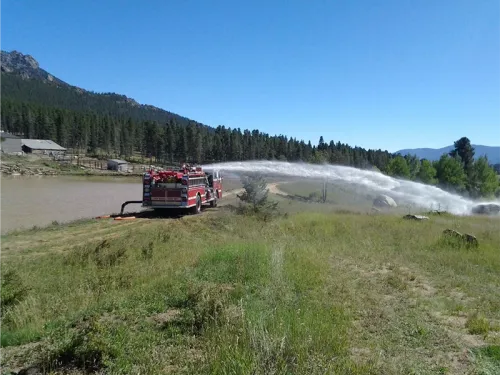

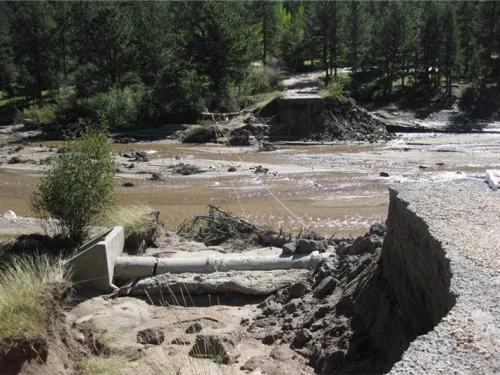

Banqiao Dam (China, 1975)

Buffalo Creek Dam (West Virginia, 1972)
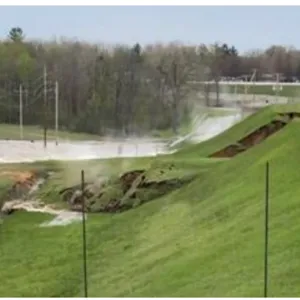
Edenville Dam (Michigan, 2020)
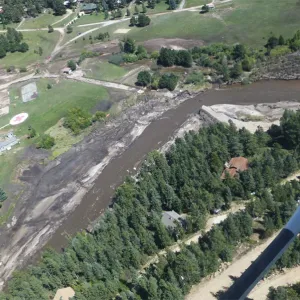
Front Range Flood (Colorado, 2013)
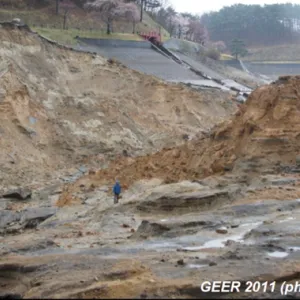
Fujinuma Dam (Japan, 2011)
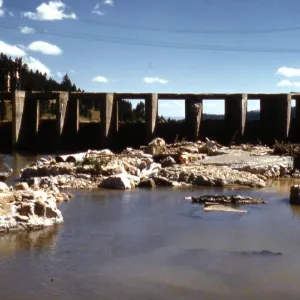
Hebgen Dam (Montana, 1959)
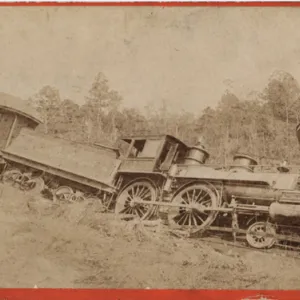
Langley Dam (South Carolina, 1886)
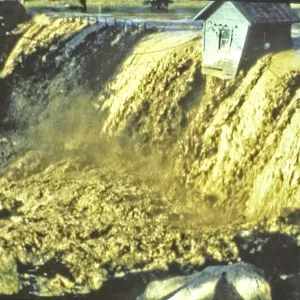
Lawn Lake Dam (Colorado, 1982)

Sugar Creek Watershed Dam No. L-44 (Oklahoma, 2007)

Swift and Two Medicine Dams (Montana, 1964)
Additional Case Studies (Not Yet Developed)
- Christmas Flood (Northwest U.S., 1964)
- Colorado River Flood – Bureau of Reclamation (multiple dam incidents, some in series) (Multiple States, 1983)
- Rain Event (14 failures) (Michigan, 1986)
- Hurricane and Tropical storm (15 failures, 41 damaged) (Texas, 1990)
- Tropical Storm Alberto (1,300 dams inspected by air or ground, 230 failures) (Georgia, 1994)
- Burlington County (18 failures) (New Jersey, 2004)
- PA and MD Flood (8 failures and 15 incidents) (Pennsylvania & Maryland, 2006)
- Indiana Flood (110 inspections, 1 failure, 13 damaged) (Indiana, 2008)
- Hurricane Irene & Tropical Storm Lee, (NJ alone had 267 inspections, 6 failures and 51 damaged) (Northeast U.S., 2011)
- North American storm complex (50 dams failed) (South Carolina, 2015)
- Hurricane Matthew (20 dam failures) (North Carolina, 2016)
- Hurricanes Irma and Maria (37 regulated dams impacted) (Puerto Rico, 2017)
- Hurricane Florence (13 failures) (North & South Carolina, 2018)
- Hurricane Harvey (4 failures) (Texas, 2018)
- Wisconsin Storm (5 failures) (Wisconsin, 2018)
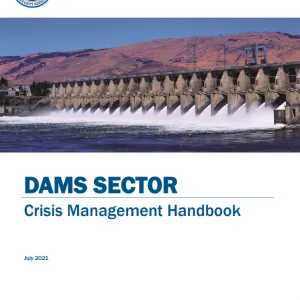
Dams Sector Crisis Management Handbook
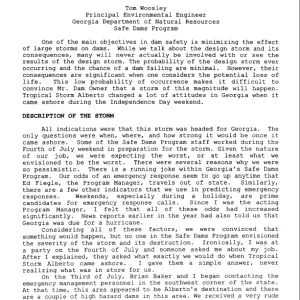
A Look Back at Georgia’s Response to the Great Flood of 1994
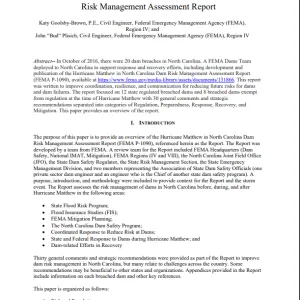
An Overview of the Hurricane Matthew in North Carolina Dam Risk Management Assessment Report

Dam Safety in the Northeast Hurricane Irene and Tropical Storm Lee

From Response to Recovery – The Story of the 2013 Colorado Floods as Experienced by the Colorado Division of Water Resources












